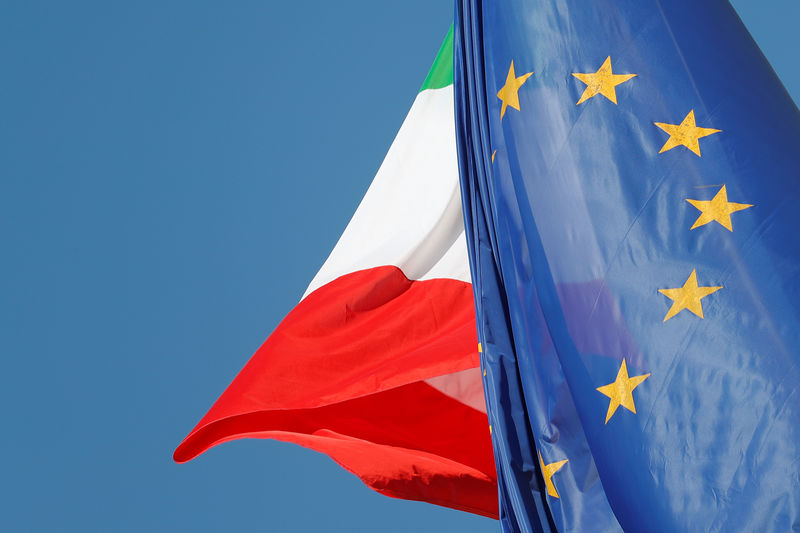(Bloomberg) -- “The situation is just unsustainable,” complains Giovanni Savorani, who runs ceramics company Gigacer SpA in northern Italy’s virus-afflicted Emilia Romagna region.
Savorani, the chief of industry association Confindustria Ceramica, is just one of the voices heaping pressure on Prime Minister Giuseppe Conte to find a way out of the economic cul-de-sac created by the lockdown. Millions of companies, and their employees, have been affected, and many businesses fear bankruptcy.
The first major European country to be struck down by the coronavirus epidemic, Italy now finds itself in the vanguard of how to devise an exit strategy for a large economy from such a deep freeze in activity. That finely balanced experiment pits the threat of deepening financial damage against the danger of ushering in a second wave of the virus, with the death toll that would entail.
A decision by Conte’s government is imminent, now that the curve of new virus cases is flattening out, after more than four weeks of near-complete halt to all business activity and over 16,000 lives lost. The economic devastation is clearly evident in a country whose finances were strained by high debt and low growth even before this crisis.
“Italy’s real problem is that it was already in a weak position because of its high public debt,” said Nicola Nobile, an economist at Oxford Economics. “A country with Italy’s structural problems can ill-afford any further delay.”
Bloomberg Economics forecasts a contraction of more than 6% in the first quarter, and Unicredit (MI:CRDI) sees GDP dropping 15% this year.
While medical experts insist it is too early to say when restrictions can be lifted, companies are already eyeing the second half of April, the current horizon for the lockdown measures. Carmaker Fiat Chrysler is one of the country’s big businesses penciling in April 14 to begin output again.
But only certain areas like agriculture and the health sector may be allowed to open by that date, according to an official familiar with the discussions. A so called “phase 2,” with companies and businesses gradually kicking back into activity, could start on May 4, government sources say.
Savorani, whose association includes 170 members and as many as 40,000 employees, says that sort of timetable isn’t good enough. His industry risks losing permanent market share to foreign rivals whose production is poised to be up and running, he says.
More than half of Italy’s 4.3 million businesses have been shuttered, according to employer association Confindustria, estimating that almost 9 million workers are affected.
Retail fuel sales are down 85%, according to gas station unions, while tourism has come to a complete halt, with almost all hotels closed, according to the Federalberghi hotel owners’ association.
“Some firms may never reopen,” Licia Mattioli, vice president of Confindustria, said in an interview. “We cannot wait any longer.”
Mattioli, who heads a family-owned fine jewelry company by the same name in Turin, observed that Italian productive capacity is at 50%, while other countries are well above that.
“Once you lose a client because they are supplying themselves elsewhere, it’s difficult to get back into the value chain,” she said. “In other areas like fashion, where you produce for sale later in the season, you have shoes, bags, clothes that expire like mozzarellas.”
Smaller European countries like Denmark and Austria have already announced plans for a return to normalcy in coming months, prompting Italian businesses to push even harder for a gradual reopening.
Conte has a delicate calculation to make however. Authorities fear that an early relaxation could spark another wave of contagion. Italy has already been scarred by decisions that prioritized business before health in the early days of the crisis, when production was allowed to continue until the death toll spiraled out of control.
Then when output begins anew, there is the problem of reorganizing distribution and supply chains to comply with new rules introduced to ensure safety. These include providing protective gear and ensuring social distancing during all phases of the workday, including in canteens and locker rooms.
Such requirements may be difficult to implement for many smaller companies. Meanwhile, trade unions have threatened strikes if the economy restarts too soon, while employers also risk costly lawsuits if staff fall ill at work.
Even when all those hurdles are cleared, and assuming there’s no resumption in the outbreak, Italy will then face a gargantuan struggle to repair its economy.
“The real problem is the recovery,” said Gianluigi Torzi, Chairman of asset management company JCI Capital. “We won’t see a post-war type of recovery when all this is over. Post-war recoveries are happy, productive. This recovery, will be a sad one.”
